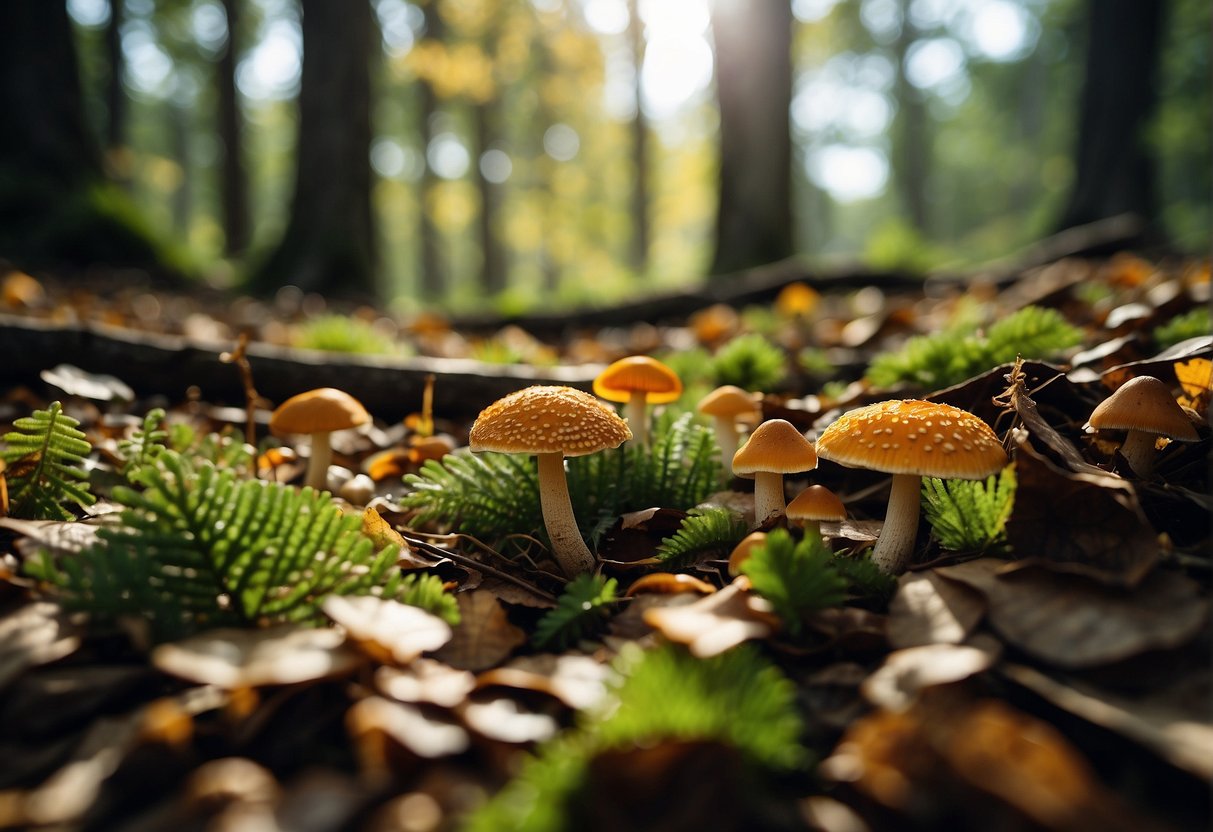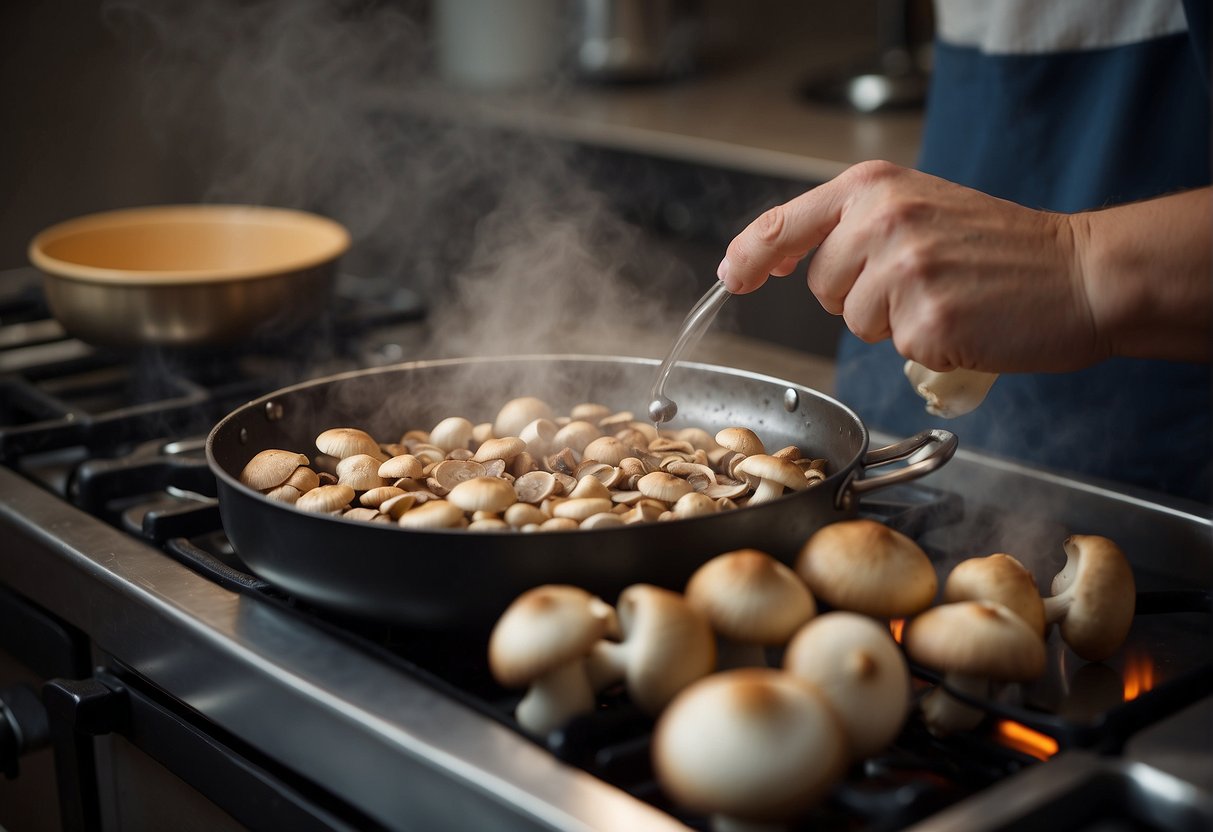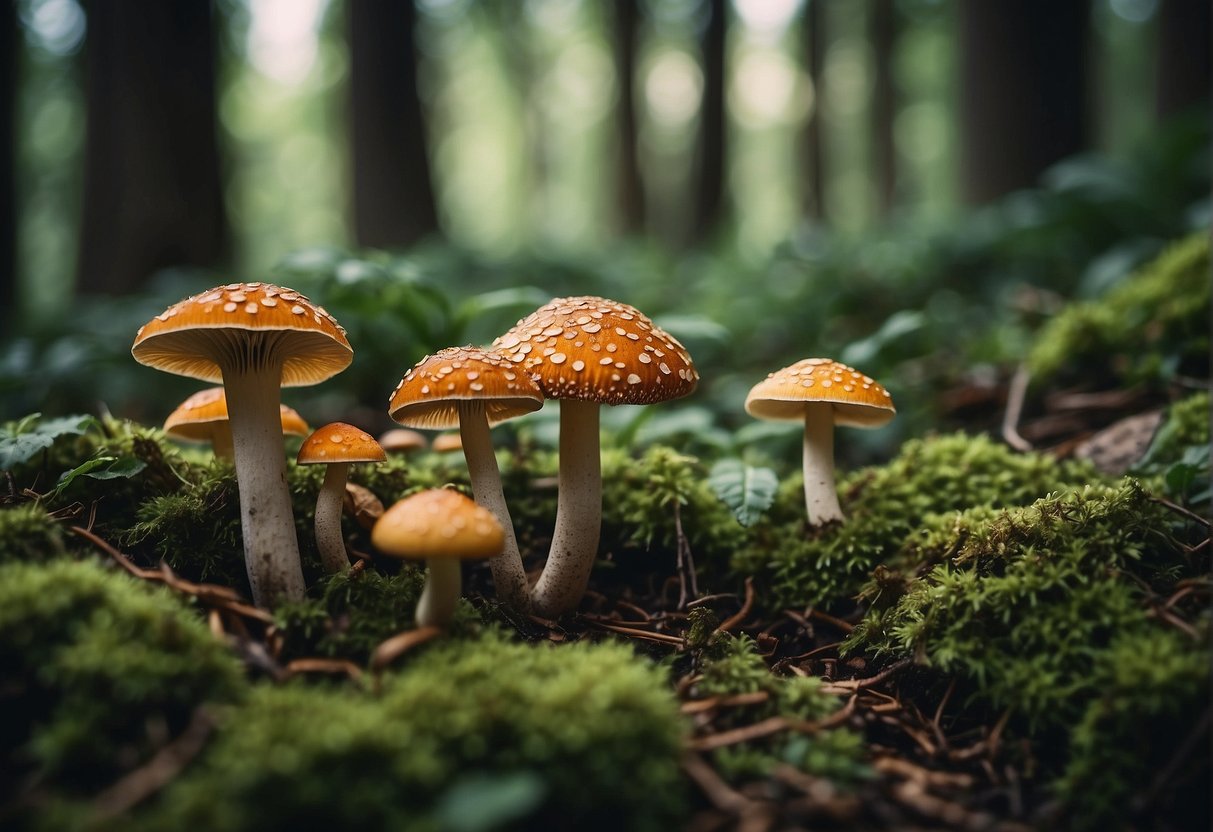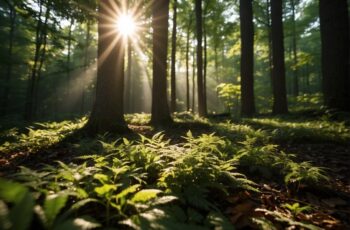Venturing into the wilderness, you may discover an array of foraged mushrooms, a treasure trove of flavors and textures that store-bought varieties can rarely match. Seasonal, fresh wild foraged mushrooms, such as morels, chanterelles, and giant puffballs, not only offer a culinary delight but also an engaging experience in the great outdoors. Sought by chefs and enthusiasts alike, these natural offerings require knowledge and respect for the environment to ensure sustainable practices.

Foraging for mushrooms is rewarding but necessitates care and expertise. Proper mushroom identification is critical, as some wild mushrooms can be toxic. By learning which mushrooms are edible and understanding their habitats, you stand to enrich your outdoor adventures significantly. In addition to identification, knowing how to pick, process, and prepare your foraged finds will ensure that your experience is both safe and pleasurable.
Key Takeaways
- Foraged mushrooms offer a unique culinary experience with a variety of flavors and textures.
- Knowledge of mushroom identification and foraging techniques is essential for safety.
- Sustainable foraging practices help preserve wild mushroom populations and their habitats.
Basics of Foraged Mushrooms
Exploring the world of mushrooms is an engaging journey. As you step into the forest this spring, equipped with knowledge on mushrooms’ diversity, make sure you can distinguish between edible species and understand how they interact with their environment.
Identifying Edible Species
When foraging, correct identification is critical for your safety. Edible mushrooms can often look deceptively similar to poisonous ones. Start by examining specific features such as the cap, gills, and stem. Take a spore print, which involves removing the cap and placing it gill-side down on a piece of paper, to help confirm the species. Fungi such as Morels and Chanterelles are sought after for their distinctive appearance and flavor.
- Visual Features to Observe:
- Cap shape and color
- Gills or pore surface
- Stem characteristics
- Spore Print Color Guide:
- White to cream
- Pink to brown
- Black to rust
Remember, familiarity with common edible species local to your area is essential. Refrain from consuming any mushrooms unless you’re 100% certain of their identity. Look to a beginner’s guide to foraging for wild mushrooms for comprehensive information on identification.
Understanding Mushroom Ecology
Mushrooms play an important role in the forest ecosystem. They thrive in moist, temperate conditions, especially in spring when the soil is wet. Understanding the ecology of fungi is crucial for successful foraging. For instance, mushrooms like the porcini establish symbiotic relationships with certain trees.
- Environmental Elements Influencing Mushroom Growth
- Moisture levels
- Temperature variations
- Type of decaying organic matter
Mycology, the study of fungi, can unveil fascinating insights into mushroom diversity and how they disperse spores to reproduce. A deeper appreciation for mycology can enhance your foraging experience. Learn about the seven steps to kick-start your mushroom foraging journey at Environment Co.
Remember, knowledge of edible species and the environment in which they grow is your best tool. Stay safe and enjoy the hunt for these culinary treasures of the forest.
Foraging Techniques
Embarking on a quest for wild mushrooms demands respect for nature and keen awareness. You should be equipped with the right tools, know the optimal times and locations to forage, and follow proper etiquette to ensure a sustainable and responsible adventure.
Tools and Equipment
Your success in mushroom foraging lies in being adequately prepared. Essential tools include a sturdy knife to cut mushrooms from their base, a compass and a map for reliable navigation, and containers for collection. Avoid plastic bags as they can suffocate your finds; opt for paper towels or wax paper to wrap individual types, and carry them in a basket or breathable cloth bag to maintain their condition.
Times and Locations
Timing is crucial. Mushrooms thrive in certain environments depending on the season; damp, woodsy areas are usually productive after rainfall. Always carry a water bottle to stay hydrated and refer to your map and compass to locate known hotspots while considering the time of day and weather patterns.
Foraging Etiquette
Understanding and adhering to foraging etiquette ensures the sustainability of the ecosystem. The leave no trace principle is foundational; pick your mushrooms carefully without disturbing the mycelium. It’s imperative to avoid damaging the habitat, and also to never overharvest. Always follow local guidelines, and if partaking in group forages, respect others’ finds and space.
Mushroom Identification
When embarking on mushroom foraging, proper identification is crucial for your safety and enjoyment. Knowing the characteristics and using resources like guidebooks are essential tools in distinguishing between edible and potentially harmful species.
Key Characteristics
The process of identifying mushrooms accurately relies on observing several key characteristics:
- Color and Texture: Observe the cap, stem, and gills or pores. Take note of the mushroom’s color and any changes as it matures. Texture can range from slimy to dry and is important in differentiating similar species.
- Pores and Gills: The underside of a mushroom can either have gills or pores. While mushrooms like chanterelles have well-defined gills, boletes are characterized by their sponge-like pores.
- Smell: A mushroom’s odor can be distinctive. For example, the edible chanterelle has a fruity scent reminiscent of apricots, while some inedible species might emit an unpleasant odor.
- Spore Prints: Creating a spore print is a vital step in mushroom identification. The color of the spore print can help distinguish between species, such as the dark spore print of the black trumpet mushroom.
Remember to approach foraging with respect for the environment by only collecting mushrooms that are abundant and leaving the young to mature.
Mushroom Guidebooks
Mushroom guidebooks are indispensable for foragers; they not only provide pictures but also give context to the local ecology and expert advice. Some notable books written by seasoned mycologists and foragers include:
- North American Mushrooms: A Field Guide to Edible and Inedible Fungi by Orson K. Miller Jr., which is comprehensive in scope, covering a vast array of North American species.
- How to Forage for Mushrooms without Dying by Frank Hyman, offering pragmatic wisdom for those new to foraging, steering you clear of dangerous false morels.
When choosing a guidebook, opt for one that caters to your regional flora for the most relevant information. Additionally, affiliating with organizations such as the North American Mycological Association can provide you with opportunities to learn from collective knowledge and experience.
Processing and Preparation
In this section, you’ll learn how to properly clean, store, and utilize those wild mushrooms you’ve foraged. From the essential first steps to the final culinary delights, mastery of processing and preparation is key to enjoying the full flavor of your finds.

Cleaning and Storage
Cleaning: Begin by using a sharp knife to trim off any dirt-laden stems of your mushrooms, such as hen of the woods. Gently brush off loose debris and consider rinsing quickly under water, but avoid soaking as it can cause them to become waterlogged, potentially diluting their rich flavors.
- Oyster mushrooms: Simply wipe with a damp cloth to preserve their color and flavor.
- Morel mushrooms: Due to their honeycomb structure, they may need a bit more attention to dislodge any hidden grit.
Storage: Pat the mushrooms dry and store them promptly to keep them fresh.
- For mushrooms like dryad’s saddle, store in a breathable mesh bag or paper bag in the refrigerator for short-term use.
- Some like laetiporus sulphureus, also known as chicken of the woods, can also be sliced and frozen for long-term storage.
Culinary Uses
Sautéing: Enhance the earthy tones of your foraged mushrooms by sautéing them in butter or olive oil over medium-high heat. Season with salt and a splash of lemon juice to brighten the flavors.
- Hen of the woods: Sauté until crispy for a savory snack.
- Chicken mushroom: Cook with chives and sesame oil for an Asian-inspired dish.
Grilling and Soups: Whether you’re tossing oyster mushrooms on the grill or simmering morel mushrooms in soups, remember, a little seasoning goes a long way.
- For grilling, coat lightly with oil and grill until charred.
- Soups: Start with a base of chicken or vegetable broth, add your chopped mushrooms, and simmer until fully imbued with flavor.
By diligently distinguishing between edible and potentially toxic fungi, you ensure safe and enjoyable foraging for wild mushrooms. Remember, vibrant colors and unique structures are intriguing but are not reliable indicators of edibility. Always reference a field guide to confirm the identity of your foraged mushrooms.
Conservation and Sustainability

When you forage mushrooms, your actions have a direct impact on ecosystems. It’s your responsibility to harvest in ways that ensure future health and abundance of these valuable organisms.
Sustainable Foraging Practices
Leave No Trace: Begin by adopting a ‘leave no trace’ philosophy. This means you should:
- Disrupt the natural environment as little as possible.
- Harvest selectively and responsibly, taking only what you will use.
Mycelium and Spores Preservation: Be mindful of the mycelium, the underlying fungal network that gives rise to mushrooms. Avoid damaging it, and whenever possible, leave some mushrooms intact to release spores for future growth.
Harvesting Techniques: Use a knife to cut mushrooms above the ground level to preserve the mycelium. Always carry a mesh bag or basket which allows spores to disperse as you move through the woods.
Involvement and Education
Join Organizations: Consider joining groups like the North American Mycological Association for guidance on sustainable practices and to stay informed about the latest in mycology.
Learn and Teach: Increase your knowledge by engaging with experts and experienced foragers. As you learn, take the time to mentor newcomers on sustainable methods.
Remember, every mushroom you harvest is a lesson in conservation, and your actions teach others to respect and protect our natural resources.


